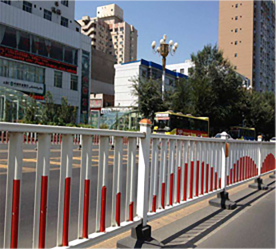Perforated Screen Mesh An Overview
Perforated screen mesh is a versatile product widely used in various industries, from construction to mining, and even in agriculture. Its unique design features a series of holes or slots punched through the material, which can be made from metals, plastics, or composites. This perforation allows for the passage of air, light, and fluids while providing structural integrity and strength.
One of the primary uses of perforated screen mesh is in filtering applications. The size and pattern of the holes can be tailored to suit specific needs, making it ideal for separating different materials. In water treatment facilities, for instance, perforated screens are used to filter out debris and contaminants, ensuring clean and safe water. Similarly, in the agricultural sector, these screens are employed in seed sowing machines to regulate seed distribution and control the size of seeds that pass through.
Moreover, perforated screen mesh plays a crucial role in architectural projects. Designers often use it for cladding and facades, providing aesthetic appeal while allowing for ventilation and natural light. The perforations can be arranged in intricate patterns, contributing to the character of the building without compromising functionality. Additionally, its durability makes it suitable for outdoor applications, resisting harsh weather conditions and corrosion.
perforated screen mesh

In the mining industry, perforated screens are essential for the grading and sorting of materials. By allowing finer particles to pass through while retaining larger ones, these meshes facilitate the efficient extraction of minerals. Similarly, in the recycling sector, they help separate recyclable materials from non-recyclables, streamlining the sorting process.
Another significant advantage of perforated screen mesh is its lightweight nature paired with strength, making it easier to transport and install. This characteristic is particularly beneficial in construction, where weight savings can lead to lower shipping costs and simpler handling on-site.
While metal is the most common material for perforated screens, plastic versions are also available for specific applications where corrosion resistance is paramount. For example, in chemical processing, plastic perforated screens can withstand exposure to harsh chemicals that would damage metal alternatives.
In conclusion, perforated screen mesh is an essential component across many industries. Its adaptability, functionality, and aesthetic qualities make it a popular choice for various applications, from filtering and sorting to architectural design. As technological advancements continue to enhance the manufacturing processes of perforated screens, we can expect to see even more innovative uses and improvements in their performance, solidifying their place in modern industry.
-
Why Galvanized Trench Cover Steel Grating Resists Corrosion
NewsJul.10,2025
-
The Versatility and Strength of Stainless Expanded Metal Mesh
NewsJul.10,2025
-
Load Calculations in Steel Grating Platforms
NewsJul.10,2025
-
Keeping Pets and Kids Safe with Chicken Wire Deck Railing
NewsJul.10,2025
-
Hole Diameter and Pitch for Round Perforated Metal Sheets
NewsJul.10,2025
-
Aluminium Diamond Mesh in Modern Architecture
NewsJul.10,2025
Subscribe now!
Stay up to date with the latest on Fry Steeland industry news.

